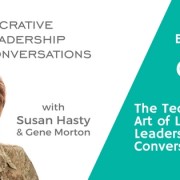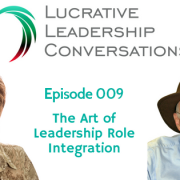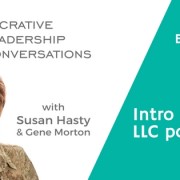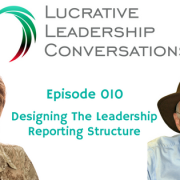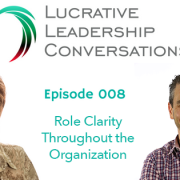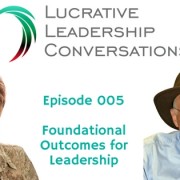004 | Keys to Team Collaboration and Leadership Response-ability
In the world of business, the goal today is increased team collaboration. This concept has gained traction and evolved significantly over the last couple of decades. But what is it, and how do we achieve effective collaboration among our teams in today’s shifting leadership environment?
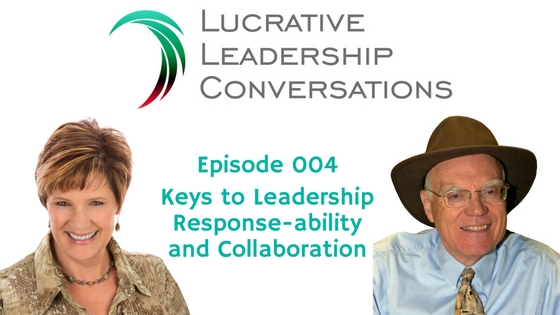
What is Team Collaboration?
Team Collaboration is when leaders pause to have conversations with the people that they’re leading from the standpoint of testing ideas and looking at potential decisions from several different angles. Team collaboration in a business context also involves gathering input and simply being sociable, in some cases. It is generally the back and forth conversation that naturally occur during the work day.
What has happened in the research over the years was the thought that the amount of team collaboration is defined by the amount of participation by the employees. The amount of conversation is one of the ways that leaders developed a highly motivated work force. That is where everything was leading.
Later on, research discovered that engagement in the task of the organization–how interesting it is, how rewarding it is, how satisfying it is–is a more strongly motivating factor than how friendly the relations were with the leader.
The more engaged people are said to be in the task of the company, typically the more collaboration occurs within a team environment.
The leader needs to go to the people, sit down, talk over the situation, and get their input into what direction the leader thinks is the best for the organization when it comes to making a decision or setting up a policy. Research has found these different levels of team collaboration in the decision making process leads to more productive outcomes and as well as building strong motivation within teams.
A Personal Story
When I was working with the vice president of an insurance holding company, we we’re doing some compensation work. It was a difficult, complicated, kind of compensation plan that we were trying to simplify. And so, we were working in a closed room, trying to make sure that this plan covered all the points that were needed to be covered by the plan.
And I worked out all the arrangements necessary to make sure this would be an effective compensation plan. Well, I presented that along with the people who work with me to the rest of the H.R. managers and different organizations that were part of the holding company. And one of the guys who was a wise fellow, Actually, I don’t mean why his angry…his truly wise (Laughter-08:33). He said, well you’ve already made up your mind. Why are you asking for her input and I was shocked. Not because what he said, but to what I had done. He was exactly right on target and I had totally lost sight of the fact that in my role, I had just kind of taken over this thing, work everything out and then try to give in and then was giving them the illusion that would have input.
Well actually they would have input because I was doing reality to send hate books…is this thing sounds sensible? Well then they come up with some objections, the way we did figure out how to work or we literally changed it. Make sure it works with this situation.
They didn’t object to the plan. They object to the fact that they felt as though I was trying to trick them and I agree one hundred percent through that reaction. I mean, I can see that’s very reasonable reaction. And I was so embarrassed when I did that and I can tell you I think it happens with leaders in all sorts of different situations they are so caught up.
Don’t try to get up there and say a “Hey folks this is a participative decision”, when in effect, it’s not.
In Gene’s book, “Leaders First Six Balls steps to sustain breakthroughs in Construction”, he outlines how to create a team collaboration structure. This process helps to establish a structure for the leaders before they start trying to roll out organization for their entire company.
Leadership Structure
Surprisingly, there is little literature today on developing an effective leadership structure. Yet, there is tons of information about strategic planning. Each organization must choose one unique leadership structure. You can’t cookie cut this process. They need to build or rebuild their own structure. Gene Morton makes an interesting point:
I think the reason that there’s been so little research done is because this is the secret sauce. I mean, you talk about the guys that are famous at leaders. You notice a lot of talk about motivation this and development that… And very few who say much about how they innovated and how they organized their own leadership staff so that they could get things done. And some of these guys really got some things done! The ability to organize the leadership group is very important to the success of organization.
There is a lot of emphasis, today, on reorganization. But you don’t want to be messing with it down the line. Your employees are the people pumping it out every day. They are ones that get the product from the suppliers into their customer’s hands. Don’t be messing with them until you’ve got things worked out for yourself. The thing that screws up an organization is the leadership structure and how they work together. That’s where it all starts.
Audacious Goals vs. Critical Outcomes
In Gene Morton’s “Leaders First” process, critical business outcomes differ from strategic goals that are typically referred to as “big hairy audacious goals.”
Outcomes can be defined as being that service or product that you’re delivering to a customer. This is the value you are adding that keeps them coming back wanting more. If you’re not clear about your outcomes, the goals won’t make up it. Outcomes keep the company going, making it strong, profitable, and sustainable. Your company outcomes are absolutely critical to business success. Plus, since outcomes refer only to what is critical for the company to survive, there are really only about a half dozen you need to focus on and meet on a daily basis.
Outcomes are very precise and establish the company’s unique position in the marketplace like nothing else. Strategic goals do not establish a unique position nearly as much as an outcome. The difference between goals versus outcomes is that a goal is usually a statement of an intention for some desirable future. Outcomes always affect today.
In other words, outcomes are what feed our organizational energy, money, information, and everything that keeps our organization alive. Fortunately, you don’t have set your outcomes many times once you get on top of it. If you can think of some outcome leaders, they became even simpler. A company is better off to understand their critical outcomes–what needs to be done every day to survive.
For example, let’s say it was a “Big and Hairy Audacious Goal” to double your premium collections in the next year. To be able to do that, you first must have a lot of capital in the bank in order to meet the actual requirements for accepting more premiums. The limit of growth is getting a loan or investment or any capital infusion. That’s needed in order to make it possible to meet a “Big Hairy Audacious Goal” of doubling premium volume for the next year.
What is really scary about those big goals is when they’re not achieved. Don’t blame someone because the ball goes way beyond your capacity to begin with. Often, leadership teams don’t worry about who’s going to make sure the goal comes true. In effect, they find somebody who might actually turn out to be a scapegoat. They want to blame that person for not having the goal accomplished, when in fact, that person didn’t have the knowledge or skill or reach or the scope to build in their capacity needed to achieve the goal.
Strategic Vision
Managers and leaders have a lot of questions about strategic vision through the process of team collaboration to determine leadership structure. This process often leads to a strategic vision for the organization. That’s number one. Number two is that while you’re organizing your leadership team, let the strategic vision manifest itself through these conversations. Usually, companies go through strategic planning sessions, but they don’t come back to their structure.
The typical traditional organizational flowchart is often drawn without any thought to the strategic vision. Yet, the organization chart works best is when it reinforces the vision. It sets up the reporting relationships the organization will need in order to implement and execute its strategic vision. If you have your vision on the left, and you have an organizational reporting chart on the right, the two won’t be able to talk to each other.
People who are trying to work from an updated organization chart will run into obstacles when they start trying to do visionary activities that are required by the new strategy.
Responsibility vs. Accountability
What does it mean to be accountable and what does it mean to be responsible? Like previous areas, the Leaders First process takes a fresh and interesting look at accountability.
There’s a tremendous amount of confusion regarding responsibility and accountability. In the minds of many people, these terms are very fuzzy. However, they are unique and useful concepts in leadership. First of all, we are responsible for ourselves. We can be responsible as positive citizens in our community, to our family and so on. Generally speaking, in an organization or leadership structure, each critical outcome requires many people to complete many paths.
Individual responsibilities perform within their own boundaries. Boundaries would be like a job description. You can define your boundaries. A legal contract or a construction contract will define the boundaries of “what’s okay” and what’s not part of the project you’re working on. The way we define responsibility is that everyone is responsible to the organization or their team for completing their duties and tasks. Each person is responsible for supporting the delivery of critical outcomes.
In other words, you can’t divorce the success of the company from little units of responsibility for supporting the delivery of an outcome. They go hand in hand. If something happens that noone expects, everybody pitches in until it is accomplished. Team members don’t say, “That’s not my job” or “That’s your work.” Everybody pitches in and fills the gap. This is the activity that needs to be done in order to get that outcome out the door.
Each member of the team is responsible for their behavior that contributes to the outcome. It is everyone’s responsibility to work together not only to do their part, but also to give feedback to others when needed.
Accountability is directly related to critical business outcomes. Each team member will define which critical outcome arena they are involved in with regards to delivering the product or service. For example, delivery of the financial statement, delivery of the project plan, or delivery of an engineering design. Those are all arenas. Now that the arenas have been determined, each member is now accountable to others. This is the big distinction a lot of leaders miss out. You’re not accountable to yourself because accountability has to do with the delivery of an outcome.
Accountable people are in charge of designing and working the system in order to deliver their outcomes. In the case of responsibility, everybody is for themselves. But when it comes to accountability, there are only a few accountabilities in most organizations because there are only a few outcomes that are critical to the organization’s survival.
First, you need to clearly define the outcomes. The very next step is to find out who can we count on to make sure this outcome is delivered and who will be accountable to the rest of the team. This conversation is upfront. The accountable team member must be willing to report and accept accountability for the entire system and the delivery of the outcome.
For example, when a certified public accountant (C.P.A.), signs a financial statement, they are saying, in a sense, “You can count on me to produce the financial statement that meets accounting principles. You can count on to me to follow professional standards as I put these together. Therefore, you can make sound and reasonable decisions based in reality.” That’s what you’re paying for. That’s the value they are adding to the process.
Conclusion
Team Collaboration may be the Holy Grail of business today, but many leaders have no idea how to implement it correctly or effectively. Do you want more team collaboration in your organization, but don’t know where to begin? Have you tried and failed?
You start by having the conversation up front and figuring out who’s going to be accountable. Leaders face the challenge of an exponentially changing future. Becoming more collaborative by focusing on defining critical outcomes and determining accountability within the company will allow organizations to become more profitable and, in return, more sustainable.
We want to have a “Lucrative Leadership Conversation” with you. We invite you to join our LinkedIn group by clicking here. Our mission is to help leaders and companies increase team collaboration to become more profitable and sustainable.
About the Hosts:
SUSAN HASTY

Susan Hasty is the CEO of 360 Profit Masters and the host of the Lucrative Leadership Conversations podcast. Susan considers herself a “maverick leader” on a mission to inspire and equip leaders to ignite their leadership genius. Susan co-founded 7 business ventures over the last 35 years. Her passion is helping business owners and CEOs improve their own clarity, focus and commitment to build more sustainable organizations empowered to make economic liberty a reality. She is certified in Neurolinguistic Programming and is a Strategic HR Business Partner by the Human Capital Institute. She is a member of the Marshall Goldsmith Stakeholder Centered Coaching Network of International Leadership coaches.
Ready to your business more profitable? Schedule a free call with Susan Hasty
GENE MORTON
 Gene Morton is an organizational psychologist based out of Colorado. He is also an award winning author of the book, Leaders First: Six Bold Steps to Sustain Breakthroughs in Construction. Over the past 40 years, Gene has consulted on more than 100 projects in 85 organizations with leader groups engaged in complex mergers, reorganizations, leadership turnarounds, and system redesigns.
Gene Morton is an organizational psychologist based out of Colorado. He is also an award winning author of the book, Leaders First: Six Bold Steps to Sustain Breakthroughs in Construction. Over the past 40 years, Gene has consulted on more than 100 projects in 85 organizations with leader groups engaged in complex mergers, reorganizations, leadership turnarounds, and system redesigns.
He developed the Leaders First Alignment Process to provide leadership teams the model they need to gain clarity as the organization evolves. His passion is mastering the complexities of organized and collaborative leadership.
Connect With Us
Subscribe to itunes Subscribe to stitcher Subscribe to Google Play
Straight forward leadership advice
Learn a simpler, more practical approach to building your leadership team strength... Delivered straight to your inbox!

